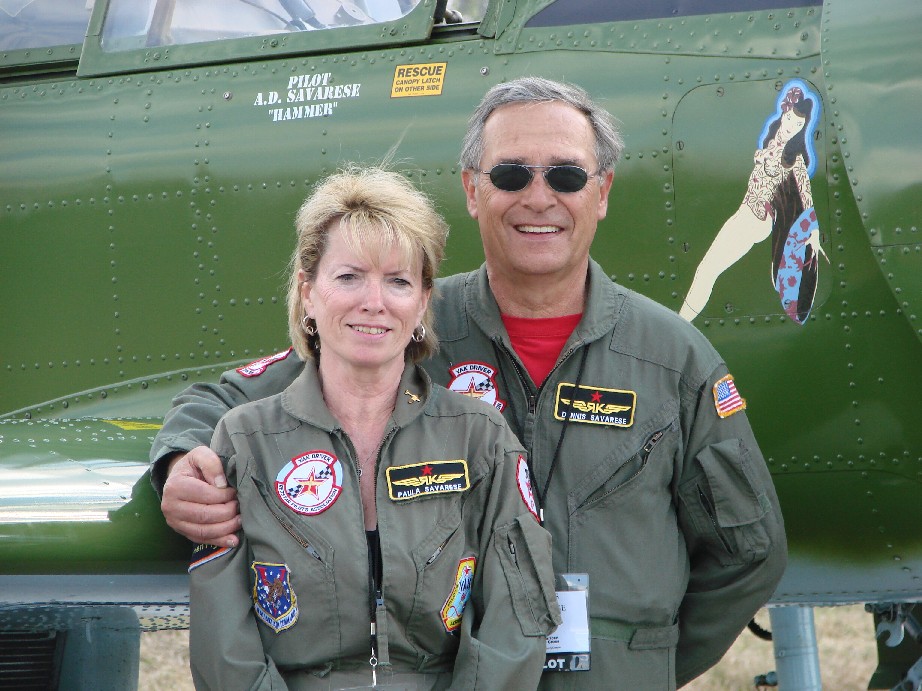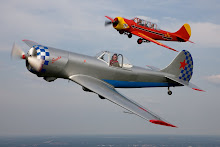column: Undercarriage slam, by Dennis Savarese
Preventing the undercarriage from slamming down into position with the aircraft on jacks while doing the annual undercarriage extension test (it WILL get your attention), can be eliminated. First let me explain why the undercarriage slams into position when using the normal emergency undercarriage extension procedure. This procedure instructs us to move the undercarriage handle to the NEUTRAL position before opening the emergency air valve. As a refresher, the only reason we use the emergency undercarriage extension procedure is because the main air system is empty (for whatever reason). Under normal operating conditions, with the undercarriage handle in the UP position, the main air tank supplies air pressure to the UP side of the undercarriage actuators while the compressor refills the main air tank. This air pressure acts as a "cushion" when the undercarriage handle is moved to the DOWN position. ie: air pressure on the UP side of the actuator is exhausting out through the undercarriage handle ( the "woosh" you hear when you move the handle or with the handle in the NEUTRAL position). The NEUTRAL position empties the air pressure from actuators. With no air pressure in the main air system, there is no "cushion". In the normal emergency extension procedure, with the undercarriage in NEUTRAL, when the emergency knob is opened, air pressure from the emergency air bottle rushes into the DOWN side of the actuators through a simple shuttle valve on each actuator (which isolates the emergency from the main system on the down side of the actuators) forcing the undercarriage to slam into the DOWN position.
Use the following procedure to eliminate the slamming of the undercarriage during emergency extension tests:
- using appropriate aircraft jacks, raise the airplane off the ground
- assure the rear undercarriage handle is in the NEUTRAL position with the slide lock in place and the front undercarriage handle is in the DOWN position
- in the front cockpit, turn the main air valve on and turn on the BATTERY/MAIN switch and the appropriate toggle switch/breaker for the undercarriage lights
- confirm the DOWN undercarriage lights are on
- next, move the undercarriage handle slide lock to the left
- raise the undercarriage by moving the undercarriage handle to the UP position
- confirm the UP undercarriage lights are on
- turn off the main air valve
- with the undercarriage handle still in the UP position, proceed to the EMERGENCY UNDERCARRIAGE EXTENSION TEST
EMERGENCY UNDERCARRIAGE EXTENSION TEST
- DO NOT MOVE THE UNDERCARRIAGE HANDLE TO THE NEUTRAL POSITION at this time as this will exhaust the remaining air pressure on the up side of the actuators
- slowly open the emergency air valve; you should see the undercarriage UP lights go out and the DOWN lights may also remain off
- with the emergency air valve still open, move the undercarriage handle from the UP to the NEUTRAL position; air pressure will begin to exhaust through the handle
- the undercarriage will now move gently into the DOWN position and the DOWN lamps will light. Explanation: the air pressure that remained on the UP side of the actuators by leaving the undercarriage handle in the UP position now acts as the "cushion" or "shock absorber" when the emergency valve is opened
- close the emergency air valve
- move the undercarriage handle from the NEUTRAL position to the DOWN position
- now you must release the pressure on the actuator shuttle valves.
IF THIS IS NOT DONE, THE UNDERCARRIAGE WILL NOT FUNCTION USING THE NORMAL PROCEDURE.
- On standard Yak 52's with pneumatic brakes, using the brake handle on the stick, squeeze and release the brake handle until there is no longer any air pressure exhausting when you release the brake handle. This is accomplished when the relief valve just below the front seat on the right side offers a sound much like a human passing gas. Once the relief valve has sounded off, you may then open the main air valve. The actuators will now pressurize on the DOWN side.
- On Yak 52TW's and W's since neither has pneumatic brakes, the factory installed a pressure relief valve for the emergency system on the rear corner of the console on the right side. Open this valve and let the air exhaust. Once you no longer hear air leaking out, close the valve.
- Next, OPEN THE MAIN AIR VALVE and perform a NORMAL undercarriage retraction/extension from either the front or rear cockpit. Be sure the undercarriage handle is in NEUTRAL in the cockpit you are NOT operating the undercarriage from.
- It is recommended to cycle the undercarriage from the rear cockpit as well during the annual testing of the undercarriage.
Good luck,
A. Dennis Savarese
Yak World of Alabama



0 Comments:
Post a Comment
<< Home